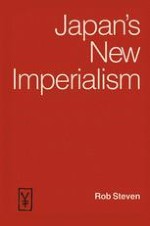1990 | Buch
Über dieses Buch
The spectacular rise of the yen in the mid-1980s has unleashed a new wave of imperialism from Japan. Its origins are traced to a series of crises and rivalries between the two great capitalist powers, Japan and the USA. To escape the high yen, Japanese capital is closing down factories at home and shifting them overseas. Some are going to the advanced countries, but the book's main focus is on the search for cheap labour in Southeast Asia to make parts for Japan's two leading industries: motor vehicles and electronics.
Anzeige
